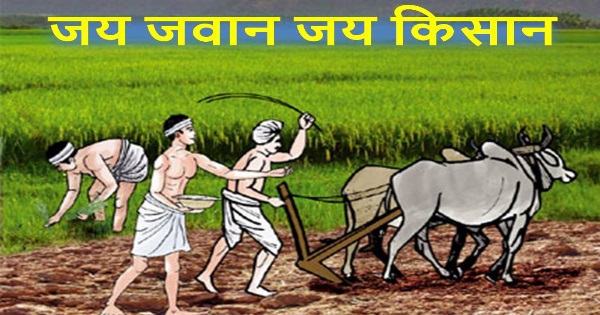Agriculture
The Hindu Family Organization - of Agriculture.Agricultural growth in 2017-18 with better monsoonIndigenous Livestock and Agriculture in IndiaPrime minister agricultural irrigation schemeAgricultural managementSolar energy driven agricultural equipment in IndiaKrishi Vigyan Kendra, working to link agriculture with employmentOrganic manure and agricultureMobile App Pausa Agricultural Launch, Government Tactics To Reach FieldsKnow some interesting facts related to your Indian 'agriculture'22nd Indian Entry for Bachelor Degree by Indian Council of Agricultural Research
Indian agriculture is mainly divided into three parts:Transfer agricultureUnder this method of farming the farmer cultivates agriculture to meet his family's food needs. If food is saved after fulfilling your family's needs, then it is used in the transactions of other items. Transfer agriculture is almost permanent in the fields of agriculture and its base is entirely rural production. Thus, land for agriculture is mostly done by setting fire to forests. The cycle of this kind is from four to eight years, sometimes it is from five to fifteen years. Transfer of agriculture to various regions of India is called by various names, such as Jhum in Assam, Ponda in Kerala, Podu in Andhra Pradesh and Odisha and Beawar, Maashan, Panda and Bera in Madhya Pradesh.This type of agriculture is mainly done in forest areas of Assam, Nagaland, Meghalaya, Manipur, Tripura, Mizoram, Madhya Pradesh, Andhra Pradesh, Odisha etc. Under this, dry paddy, wheat, maize, chorus tide, tobacco and sugarcane are produced mainly.Locative farmingUnder this method of farming, the farmer and his family, living in a permanent and fixed place of residence, work together in agriculture. In this type of farmer, farmers make changes in the crops and it maintains more than the land and crops. Most of the farmers of India adopt the same method of farming and use cattle and hals (wood or iron solution) like bulls and buffaloes for it.Humidity from artificial sources is based on supply availability.Capital based agricultureThis method of farming is being adopted in those areas, where full machines are required for agriculture. There is more expenditure of capital in this method, although income from agriculture is even higher. In India, this kind of farming is in very limited areas. The search for such areas under Horticulture Agriculture is still in progress.Harvest seasonsIndia is a country of diversity. The weather also varies, and many different crops are produced in different seasons. Here are three main types of cropped seasons:Kharif or rainy seasonThe south-western monsoon is sown from May to July on the commencement of arrival time in India and at the end of it is cut from September to October-November. The major crops of this season are jowar, millet, paddy, sugarcane, tobacco etc.Rabi or winter cropRabi or winter crops are in diverse climates. Seed germination and initial growth require cold weather and short light period, whereas ripening requires high temperature and long light period. This crop is sown from October to December in the early days of winter, and is harvested from February to April and somewhere in May. Its main crops are wheat, barley, peas, gram, mustard, potato, bursim, lentil, tur etc.
ZayedIn addition to the production of Kharif and Rabi crops, in some areas the cultivation of zid crops is also done in some areas with the arrangement of artificial irrigation throughout the year. The zayed crop is kept in two categories- Zayed Kharif and Zayed Rabi.Zayed kharif crops are sown in the last days of the rainy season from August to September and the harvesting takes place from December to January. Its main crops are rice, jowar, mustard, oil seeds, cotton etc.The seeds of Zayed Rabi crops are sown in the month of February-March, whereas their harvesting is done in the months of April-May. Its main crops are: melon, watermelon, cucumber, jicobar, moong, lobi, leafy vegetables etc.












Comments